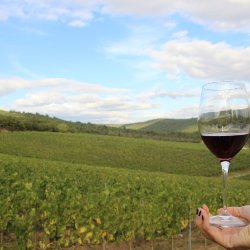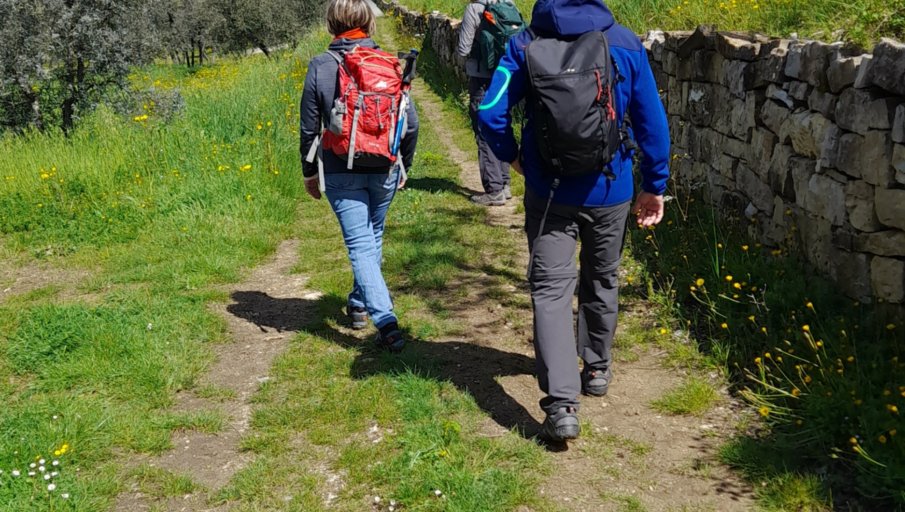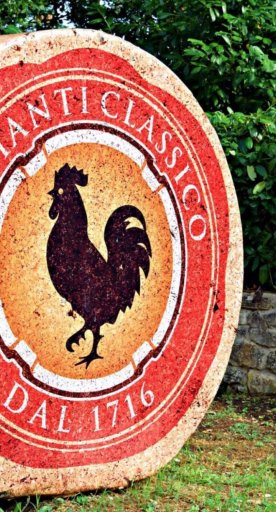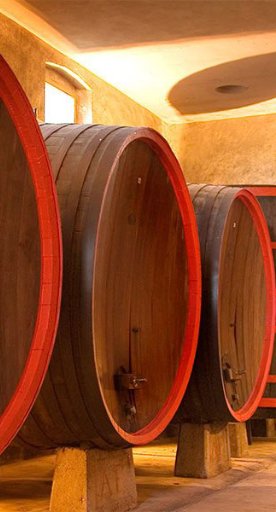The sacredness of Chianti. Parish churches and abbeys in an enchanting landscape
Along the Via Romea Sanese, between Florence and Siena, surrounded by hills and medieval villages where surprising places of worship can be found
Between the cities of Siena and Florence, centuries-old custodians of immense artistic beauty, there are stretches of peaceful and romantic countryside, punctuated by the outlines of the hills planted with vines and crossed by an ancient path. Since the Middle Ages, the Via Romea Sanese has been the favorite link between the two major Tuscan cities, as well as the best road to take when embarking on a journey to Rome: in fact, just before arriving in Siena, the route merges into the Via Francigena, which reaches the heart of the city famous for its Palio.
Today, the Via Romea Sanese winds for more than 49.7 miles (80 km), in four stages, passing through the countryside and the medieval villages, where it encounters numerous places of worship of great historical charm.
-
1.Small parish churches between the villages and the countryside
-
2.The great splendor of the major churches
Small parish churches between the villages and the countryside
At the end of the first stage of the itinerary along the Via Romea Sanese, we enter the territories of San Casciano Val di Pesa, a medieval village linked to the figure of Niccolò Machiavelli.
Immediately after passing through the gateway into the historic center, stands the Church of Santa Maria del Prato, also called "della Misericordia". It treats wayfarers to a view of its façade built from river pebbles and pietra serena, with an almost austere 14th-century sobriety. The interior, renovated in Baroque style, contains a little surprise: above the second altar, you will see a wooden crucifix attributed to Simone Martini, which was probably made for the chapel of Siena's Palazzo Pubblico; its arrival in the church of San Casciano Val di Pesa remains shrouded in mystery to this day. The building also contains paintings by Rutilio Manetti and a second crucifix, attributed to the school of Donatello.
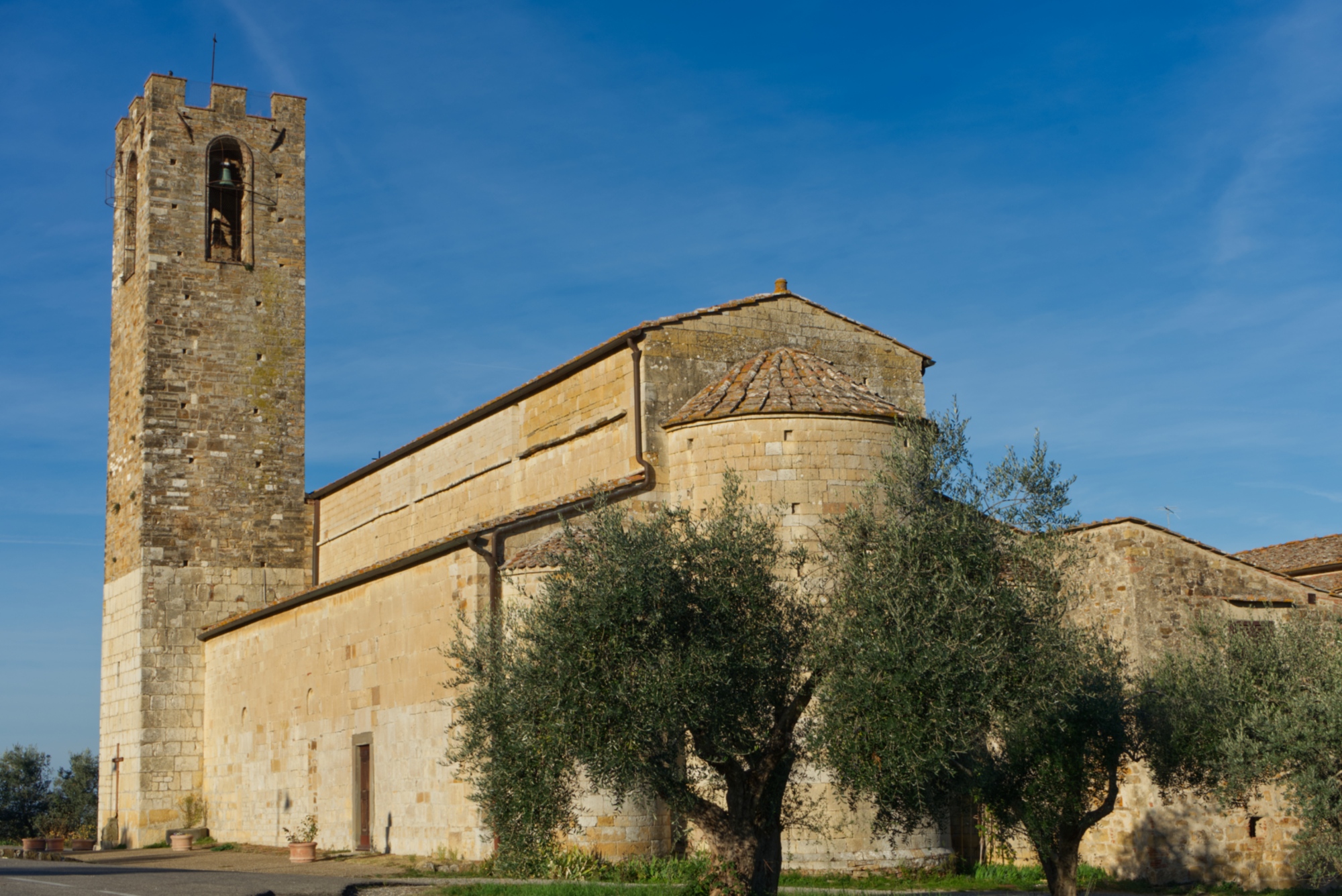
Continuing in a southerly direction, the path leads you to the hamlet of San Donato in Poggio. Here, a short detour from the route will take you to the parish church of the same name, providing very ancient evidence of the local religious community. The presence of the church is, in fact, mentioned in a document dated prior to the Year 1000 and it seems that the village emerged at a later date, thanks to the importance of the parish church. The tall bell tower soars high above the landscape, with its unusual its two-tone color scheme, while there is a baptismal font attributed to Giovanni della Robbia on the walls.
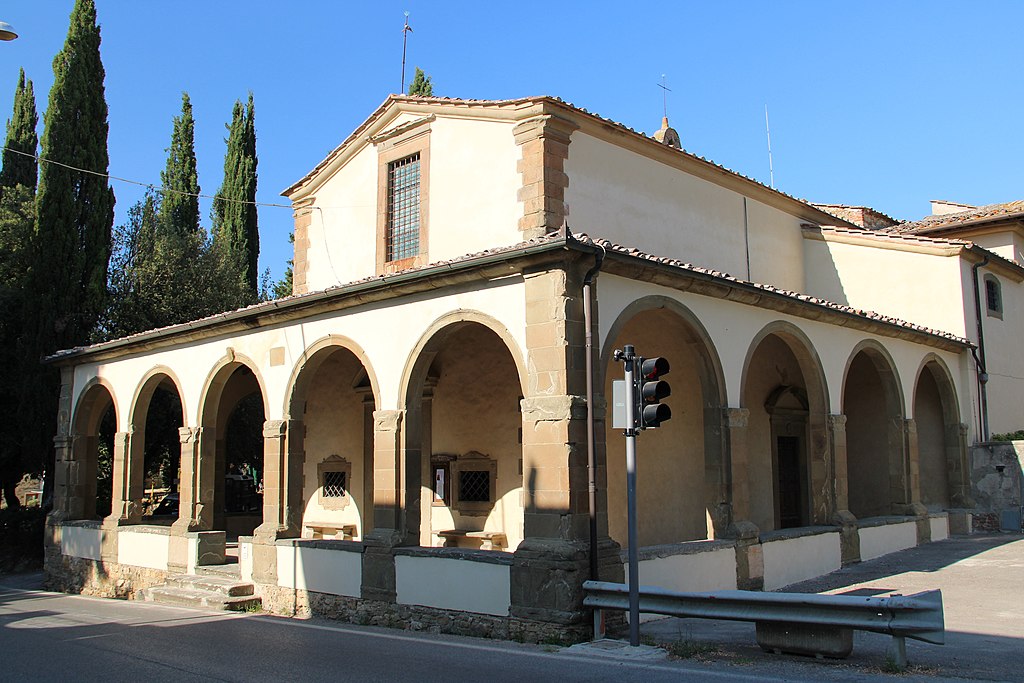
Immediately after passing through San Donato in Poggio, you will come across the Sanctuary of Madonna delle Grazie, better known as the Sanctuary of Pietracupa, to reflect the evocative name of the locality. Like many sanctuaries in Tuscany, this one was built as a result of miraculous events linked to the presence of a tabernacle with an icon of the Virgin Mary. Construction began in the 16th century and the building was soon extended and remodeled. Today, the sanctuary offers a vision of the impressive arched colonnade and elegant Mannerist architecture that can be traced back to the style of personalities like Giorgio Vasari and Bernardo Buontalenti.
The great splendor of the major churches
In addition to country parish churches and small churches located in the villages, there are religious complexes of enormous historical and artistic value along the Via Romea Sanese. One example is the Charterhouse Certosa del Galluzzo in Florence, which has been standing there since the mid-14th century in an elevated position and is worth seeing, by taking a detour from the original itinerary.
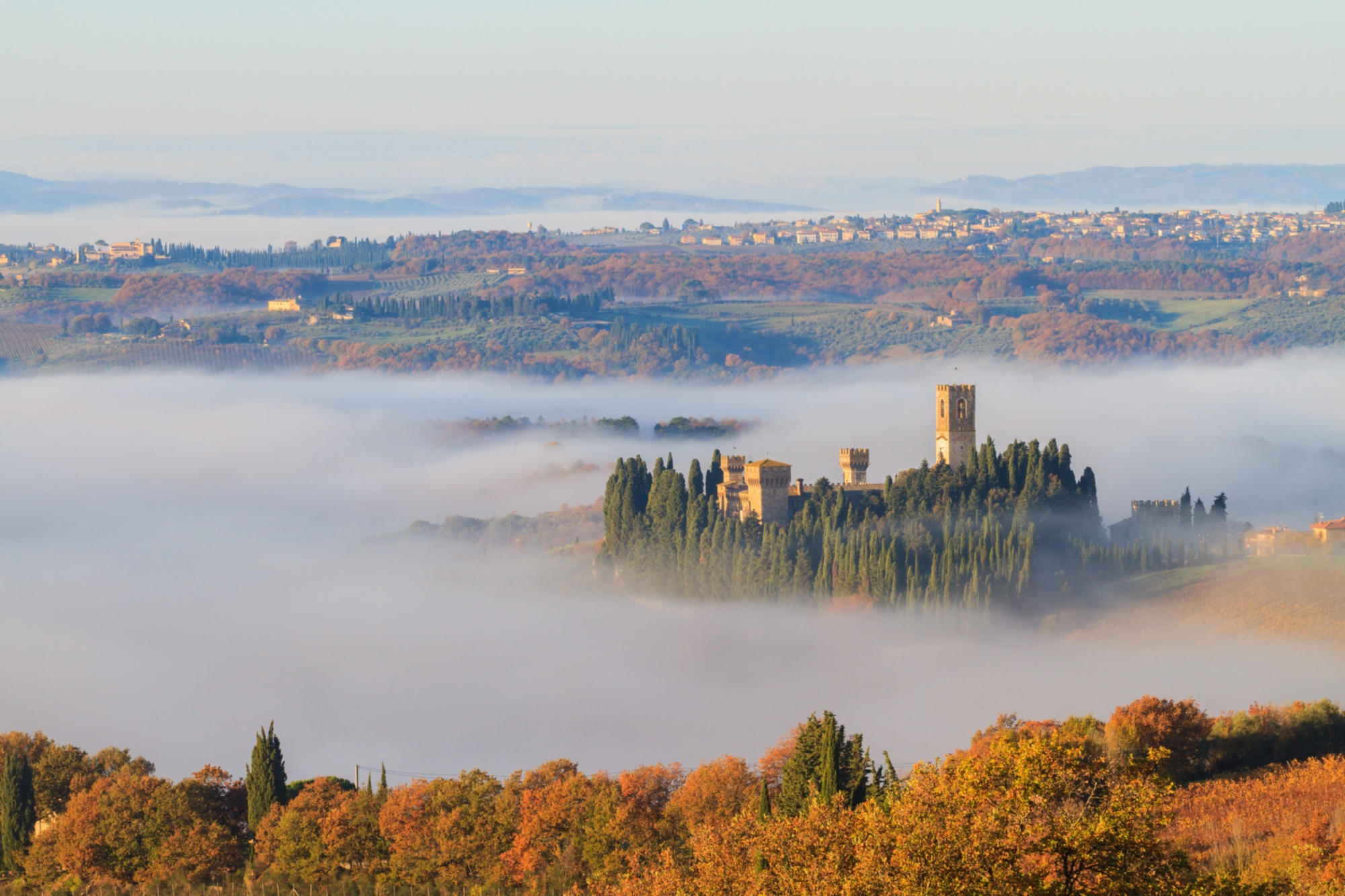
About halfway between Florence and Siena, in the Barberino Tavarnelle countryside, the Abbey of San Michele Arcangelo in Passignano reveals itself little by little. It is surrounded by a dense grove of cypress trees, the tops of which are surpassed only by the towers and tall bell tower of the church. The 1,000-year-old complex, more simply known as Badia a Passignano, originated thanks to the Vallombrosian monastic congregation led by founder St. John Gualbert, who lived here until the day he died.
In addition to the church dedicated to St. Michael the Archangel, there is a beautiful cloister inside the Abbey, as well as numerous chapels, a crypt and the reliquary of St. John Gualbert, where his tomb is also kept.
Massive modernization work in the 19th century gave the building its current appearance, that of a fortified villa, more like a castle than a monastic complex, with fascinating turrets reminiscent of neo-Gothic style.
The Abbey of Passignano is a place of immense beauty and great spirituality, where you can enjoy a few moments of rest before resuming your journey, surrounded by the beauty of the architecture and works of art such as Domenico Ghirlandaio's Last Supper, kept in the refectory.
What’s nearby?


